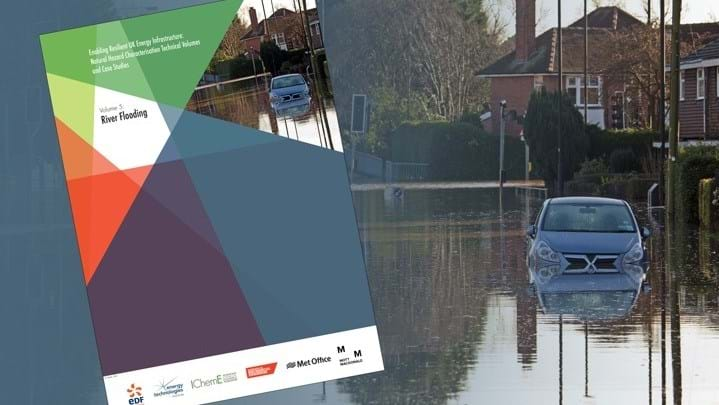Protecting future energy infrastructure from natural hazards

ICHEME has supported the Energy Technologies Institute (ETI) in publishing research identifying how natural hazards can be characterised to help improve energy system infrastructure design and inform investment decisions.
The project, Enabling Resilient UK Energy Infrastructure: Natural Hazard Characterisation Technical Volumes and Case Studies, was funded by the ETI and delivered by EDF Energy, the Met Office, and Mott Macdonald. It has 12 technical volumes that summarise the methodology of natural hazard characterisation and five case studies of UK sites to showcase the demonstration of these methodologies.
IChemE Fellows Helen Fennell, director at Inherent Safety Consulting, and John Munnings-Tomes, chief risk engineer at Navigators Technical Risk, contributed to reviewing and finalising the study. The publication was launched on 12 November at an event hosted by IMechE and IChemE.
Claudia Flavell-While, director of policy and publications at IChemE, said:
“Extreme weather events are on the rise around the world, and we have to expect that natural hazards will continue to pose a significant risk to energy infrastructure. We are proud of the role our members have played in developing these documents, and the role we can play in sharing.”
Mike Middleton, strategy manager at the ETI who ran the project, said:
“Natural hazards, such as extreme weather combined with the effects of climate change, have the potential to cause damage or disruption to the UK’s existing and future energy system infrastructure. The level of protection afforded to assets within this system are for operators, owners and regulators to decide. These decisions impact the resilience of our energy system and such decisions can be better informed and supported through the application of consistently-documented good practice in characterising the range of natural hazards relevant to the UK.
“This is why we undertook the project and have made the knowledge available to industry, organisations and individuals with the assistance of the IMechE and IChemE. We anticipate that this knowledge may be useful to designers, operators, regulators, owners and investors. It can be applied to new assets during design, or investment in existing assets through upgrades or life extension. Although developed in association with the UK’s energy system, the knowledge potentially has relevance to broader infrastructure, including transport and the built environment.”
Hugo Winter, natural hazards and environment R&D manager at the EDF Energy R&D UK Centre and chief technical officer for the project said:
“This is one of the first projects to cut across such a variety of hazards. One aim is to move away from the development of research in silos and thus highlight potential synergies; it is also anticipated that these documents will sit as a bridge between academia and industry. To support these aims, additional research has been undertaken in this project on a selection of less well understood hazards (eg space weather, marine biofouling) to bring the understanding closer to the level of more well-known hazards (eg flooding).”
The documents can be downloaded here.
Recent Editions
Catch up on the latest news, views and jobs from The Chemical Engineer. Below are the four latest issues. View a wider selection of the archive from within the Magazine section of this site.




